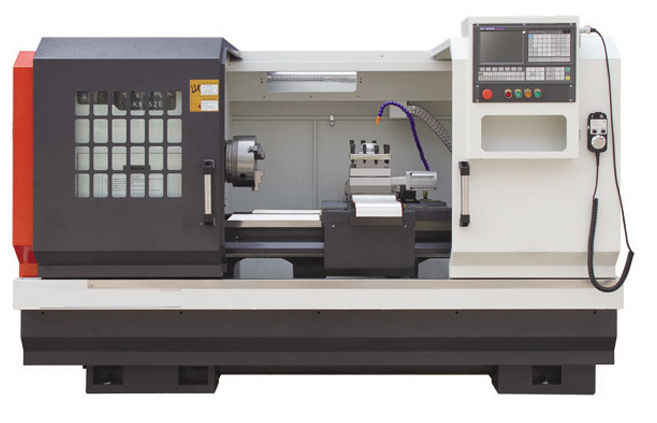In the world of modern manufacturing, the CNC Lathe has emerged as a game-changer. This blog post aims to provide you with a comprehensive understanding of what a CNC Lathe is, how it works, its advantages, and its wide-ranging applications.
What is a CNC Lathe?
A CNC Lathe, short for Computer Numerical Control Lathe, is a sophisticated machine tool. Unlike traditional lathes that rely on manual operation, a CNC Lathe is controlled by a computer program. This program precisely dictates the movements of the cutting tool and the workpiece, ensuring high-accuracy machining.
How Does a CNC Lathe Work?
The operation of a CNC Lathe starts with the creation of a CAD (Computer – Aided Design) model of the part to be manufactured. This model is then translated into a G-code, which is the language that the CNC machine can understand. Once the G-code is loaded into the CNC controller, the machine comes to life. The spindle rotates the workpiece, while the cutting tool, mounted on a movable carriage, moves along the X, Y, and Z axes according to the programmed instructions. This coordinated movement enables the creation of complex shapes and precise dimensions.
Advantages of CNC Lathes
- High Precision: CNC Lathes can achieve extremely tight tolerances, often within a few microns. This level of precision is crucial for industries such as aerospace and medical device manufacturing.
- Increased Efficiency: With automated operation, CNC Lathes can work continuously with minimal human intervention. This reduces production time and increases overall productivity.
- Versatility: They can handle a wide variety of materials, including metals, plastics, and composites. Different cutting tools can be used to create diverse shapes, from simple cylinders to intricate threaded parts.
- Repeatability: Once a program is set up, a CNC Lathe can produce identical parts over and over again with consistent quality. This is essential for mass production.
Applications of CNC Lathes
- Aerospace Industry: CNC Lathes are used to manufacture critical components such as engine parts, turbine blades, and aircraft structural components. The high precision and reliability of these machines ensure the safety and performance of aircraft.
- Automotive Industry: In car manufacturing, CNC Lathes produce engine blocks, crankshafts, and transmission components. Their efficiency and repeatability are vital for meeting the high – volume demands of the automotive market.
- Medical Field: For the production of surgical instruments, implants, and prosthetics, the precision of CNC Lathes is indispensable. These machines can create complex and customized medical devices with the utmost accuracy.
- Electronics Industry: Small – scale components like connectors and heat sinks are often made using CNC Lathes. The ability to work with small dimensions and high precision makes them suitable for this industry.
In conclusion, the CNC Lathe is an essential tool in modern manufacturing. Its precision, efficiency, versatility, and repeatability have made it an integral part of various industries. As technology continues to advance, we can expect even more innovative applications and improvements in CNC Lathe technology.

